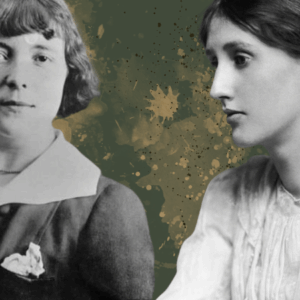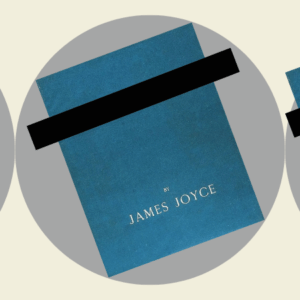Should you wish to witness man’s depravity, like a daily slap in the face, you must come to the forest. Most tourists who come here are educated and in “good” jobs. They carry fried snacks and liquor bottles all the way from their homes. Throughout their journey in the forest, they keep drinking and eating. They vomit. They pierce the tranquility of the mountain ranges with their blaring horns. Blasting their car stereos as loudly as they can, they jump about and dance. They scream obscenities at the lofty hills.
They disrespect every creature of the forest. They split guavas, fill them with red chili powder, and feed them to the monkeys by the roadside. They throw stones at deer. If an elephant crosses their path, they loudly honk their horns and frighten it. But the thing I fail to understand, no matter how many times I think about it, is why they throw empty liquor bottles into the forest with such fury. I have stopped vehicles, inspected them, made those in possession of liquor bottles step out, yanked my belt off, and given them a blood-splattering lashing. I have made them sit in front of the office in biting cold, in nothing but their underwear. Even so, there was no stopping the bottle shards that piled up on either side of the roads in the forest.
Among all animals, bottle shards are the most hazardous to the elephant. The bottom of an elephant’s foot is like a bag of sand. Invariably, the hurled bottle will have dashed against a tree and broken into shards that remain at its base. If the elephant, with its great bulk, steps on the shards, the glass will penetrate straight into its feet. Just a couple of steps, and the shards will plunge farther in. After that the elephant will not be able to walk. Within two days the wound will form pus. Maggots will enter it, pierce the flesh, and transport the pus inside. If they manage to reach any of the critical blood vessels or bones, the elephant will not survive.
With its swollen, bloated feet oozing pus, the elephant will meander through the forest for many days. When it reaches a state where it’s unable to walk, it will stop and lean against a tree. When a being that’s ordained to drink thirty liters of water, eat two hundred kilos of food, and walk fifty kilometers every day is rendered immobile, it will waste away and become unrecognizable within five days. Its spine will start to protrude. The cheekbones will bulge out.
The flapping of the ears will decrease. The crown will drop further and further. Slowly, the animal will plant its trunk on the ground and stand, inclining forward. Gradually, its crown, too, will reach the ground. The following day, it will have fallen sidelong, its stomach sticking out like a boulder. With just its tail and trunk circling in the air, its eyes opening and closing, it will begin to tremble. Other elephants will soon surround it, shake their heads, and trumpet. Then the elephant will die.
Even after the final movement of the trunk is seen, the herd will stand around for days, wailing. Eventually, it will abandon the elephant and migrate to a whole new site, many kilometers away. Owing to the thickness of the elephant’s skin, no animal will be able to eat it until its body decomposes. The sennais, the first to get to the decayed elephant, will tear into the mouth and the buttocks. Then the vultures will descend. Cackles of hyenas from far and wide will arrive in search of the carcass. The emperor of the forest, whose brain has one hundred and seventy times more neurons than man’s, will be reduced to mere white bones on this earth.
One day, we received information about an elephant roaming the forests of Mudumalai with a swollen leg. I decided to accompany Dr. K. on the trip. The indigenous Kurumbas had already located where the elephant was in the forest. We picked them up and entered the forest in our jeep. We followed what was an erstwhile horse path. Stopping the vehicle after we had driven a long way in, Dr. K. and I walked down the forest slope. Two forest officers armed with guns and a couple of Kurumbas carrying other paraphernalia accompanied us.
Clearing the piercing leaves of the wild bamboo out of the way, Dr. K. walked on. The knotted roots that ran along the ground made us trip. I held on to the trees as I walked. Even though he was nearing seventy, Dr. K. had a nimble body. The forest was to him as an ocean is to a fish. In some time, the faint scent of elephants drifted through the air. Evidently, the pachyderms had already taken note of us, and we could hear their gentle rumbling. As we descended further, beyond a stream lined by clumps of bamboo, amid a meadow stagnant with mossy sunlight, we saw a herd of a dozen elephants.
When I let my eyes rove, wondering if there might be more elephants, I spotted six of them grazing in a bamboo bush. On a closer look, I sighted four baby elephants too. Dr. K. took out his instruments and assembled them. There was one that resembled a small air gun. It had a dart for a bullet. He observed the wounded elephant keenly through his binoculars. I could see that he was estimating its weight. The dosage of the tranquilizer would depend on the weight of the elephant.
I watched him work, utterly lost in himself. Once he had readied his devices and picked them up, he said, “Please wait here . . . I’ll go and have a look.” By then, I knew better than to argue with him.
“The elephant’s standing at the foot of a huge tree. If it falls down, it’s sure to get hurt. I have to draw it closer to the marsh. The other elephants will have no idea of what I’m about to do. So they will resist,” he explained.
“Will the elephants know that this injury was caused by humans?”
“Definitely, they know it very well.”
“What do we do then?”
“We’ll see.”
Dr. K. went down the slope with caution, crossed the stream, and stepped into the marsh. Depressions formed by the firm steps of the elephants, deep enough for the leg to sink in, were planted densely all across the swamp. He stepped on their periphery and quietly walked towards the elephants. The huge matriarch standing in the middle of the herd roared. Upon hearing her, the other elephants trumpeted too. One of the elephants turned towards Dr. K. and flapped its ears vigorously. Violently shaking its head, it advanced towards him. Dr. K. did not move. It shook its head even more, and rumbling as if in warning, took a couple of steps forward.
When the elephant shakes its head, it is issuing a warning; it is declaring that it will attack. I heard my heart beating in my ears. I wished to get to my feet, run to the doctor, and stand beside him. If the elephant were to maul the doctor right in front of my eyes while I watched and did nothing, if it fell on me to carry his corpse back, I would never forgive myself. But I was unable to move. My mouth felt empty, as if my tongue had dried up and withdrawn.
Dr. K. stood still for a few minutes. The elephant, too, stood still. All the other elephants were observing him with their entire body, or so it seemed. Dr. K. walked farther ahead. Now the elephant closed in, but it did not shake its head. Instead, the animal lowered its crown a good few inches. That was a warning sign too. Dr. K. walked at a steady pace and stopped right in front of it. The elephant stood quietly. Time wore on. I could not understand what was going on. It felt like many hours had passed.
Before I knew it, the elephant retreated. The big matriarch looked at Dr. K. again, roared, and tucked its tail in. Then, one by one, the elephants climbed uphill and headed into the bamboo thicket on the other side of the slope. I stood watching incredulously, until the swirl of the last of the elephants’ tails had disappeared into the green foliage. Dr. K. put his hand up, signaling to us to join him. Stepping into the stream, we descended the slope.
Upon seeing us, the wounded elephant shook its head in anger and tried to move forward. Then it trumpeted softly and remained where it was. The doctor bid us to come closer.
The forest officers stopped where they were and only the Kurumbas and I went ahead. Suddenly, the elephant lurched towards us, causing the tree against which it had been leaning to shudder. Its hind leg was swollen to twice the size of its other legs. It was practically dragging the injured leg along in order to move.
As soon as it took a few steps forward, Dr. K. shot at it. Once the bullet had lodged itself in the soft flesh above its shoulder, the elephant shuddered and came to a stop. The flapping of its ears paused, only to resume again rapidly. Gradually, the flapping decreased. Having bent its foreleg a little, the elephant swayed. In the blink of an eye, it slumped sideways and crashed on the marshy ground below. Its trunk flailed on the grass, as though it were a creature with a life of its own. The elephant lifted just the tip of its trunk and sniffed us with its quivering nostrils before it turned motionless.
Dr. K. sat down beside the elephant and briskly set to work. I assisted him. I could sense the elephants standing in the surrounding bamboo thicket, watching us with keen eyes. I felt their gaze on my back, like an icy-cold wind. If, at some point, the elephants got the feeling that we were doing something wrong, what would happen?
One half of a beer bottle was lodged well into the elephant’s foot. Pus had formed around it and maggots had infested the pus, rendering the wound scabby, like a tiny beehive. Dr. K. cut through the scab and pus poured out, as though a big pot of yogurt had broken. White worms wriggled within the minute, honeycomb-like cavities. With a small axe-like implement, the doctor scooped out all the flesh that had been infected. As the worms crawled up my hands, I flicked them away. Once the abscess of pus had been removed without a trace, the doctor carved out the flesh around the bottle using a knife, spread the wound open, and pulled the bottle out. I was flabbergasted. It was almost as long as my hand.
“No more than a week . . . it’s fortunate,” said Dr. K. After he pulled out the bottle, more pus began to ooze out. Dr. K. scooped out all the flesh in that area and threw it out. The smell of pus faded away and was replaced by the smell of blood. Once the blood had seeped out, bathed the wound red, bubbled and overflowed, Dr. K. took out some cotton, the size of a cushion, soaked it in medicine, pressed it into the cavity, packed it tight, and taped it with a huge roll of gauze. The gauze stuck to the elephant’s foot like glue. He pinched small eversilver clips on to the canvas-like skin of the elephant’s leg, tightened the bandage, and secured it with the clips. Next, he scooped up some black mud, slapped it over the bandage, and spread it out.
Finally, after pinning a signal ring to the elephant’s ear to help locate it again, we got to our feet. Our clothes and hands were covered in blood and pus. We brushed off the worms, collected our things, and left. By the time we reached the stream and were washing our hands in it, the elephants began to return one by one. Bellowing, they came downhill and milled around the wounded pachyderm. After the grand matriarch had caressed the huge-looking bandage on the leg of the fallen elephant with her trunk, she drew her inspection to a close and let out a soft trumpet. The others followed suit. Some of them extended their trunks to the puddle of blood and sniffed at it. One of the elephants stood gazing at us, its ears pushed forward.
“It won’t disturb the bandage, will it?” I asked.
“It understands,” said Dr. K. “The elephant doesn’t like the color white, though. If we had not smeared the bandage with mud, it would be poking at it restlessly.”
“Will it heal?”
“In all likelihood, it’ll be back to its old self in just fifteen days. The elephant’s resistance to disease is astounding. The simplest of antibiotics will work wonders,” he said.
While we were returning from Mudumalai to Topslip, Dr. K. said, “What a divine being. If there should come a day when there are no more elephants in Tamil Nadu, what’ll our culture amount to? If that should happen, we might as well throw all our Sangam literature into the fire.”
__________________________________
From Stories of the True by Jeyamohan; translated from the Tamil by Priyamvada Ramkumar. Published by FSG Originals. Copyright © 2011 by Jeyamohan. Translation copyright © 2022, 2025 by Priyamvada Ramkumar. All rights reserved.













